Watercolor or Gouache: What Are the Differences?
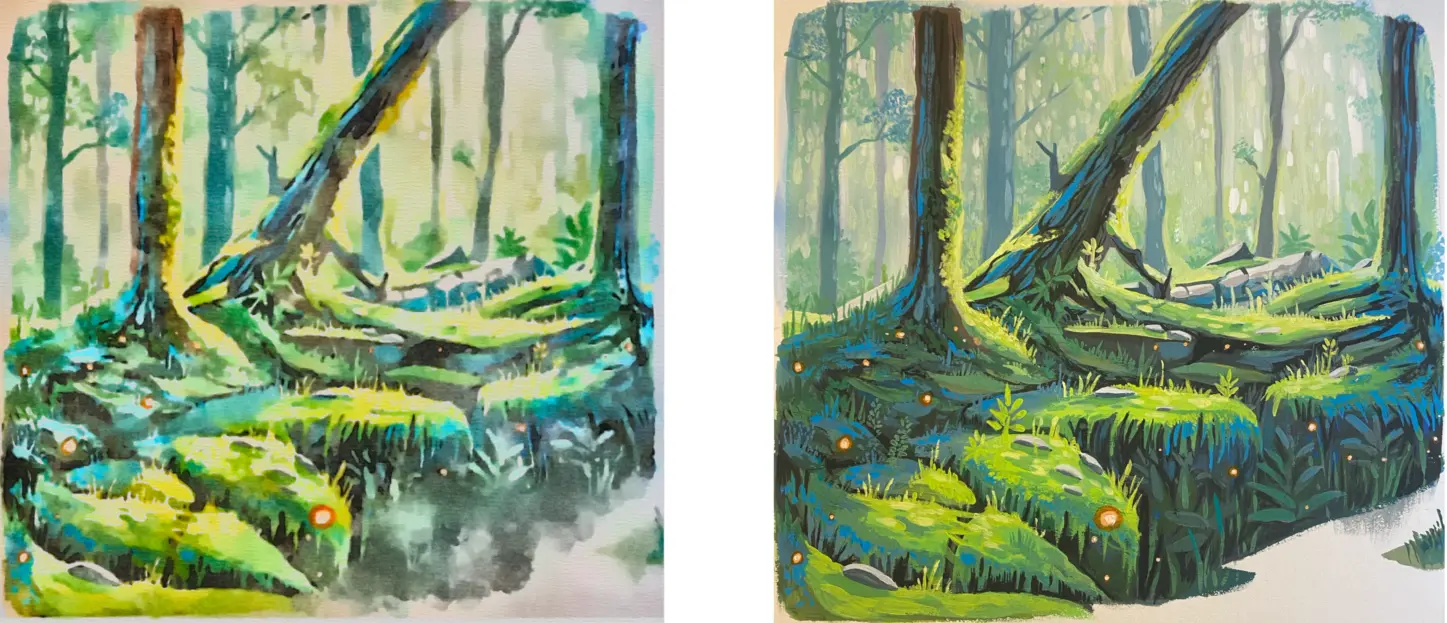
When starting out in the world of painting, choosing between watercolor and gouache can be a tricky decision. These two techniques have their own characteristics, and each offers distinct advantages depending on the type of rendering desired and personal preferences. In this article, we will explore the differences between watercolor and gouache, to help you determine which technique would be most suitable for your needs and desires.
TECHNICAL SPECIFICATIONS
TRANSPARENCY AND OPACITY
Watercolor is known for its transparency; to achieve intensity, we "build up the colors," meaning that work is done progressively by layering. Gouache, on the other hand, is opaque, making it ideal for completely covering a surface and for clean, flat applications.
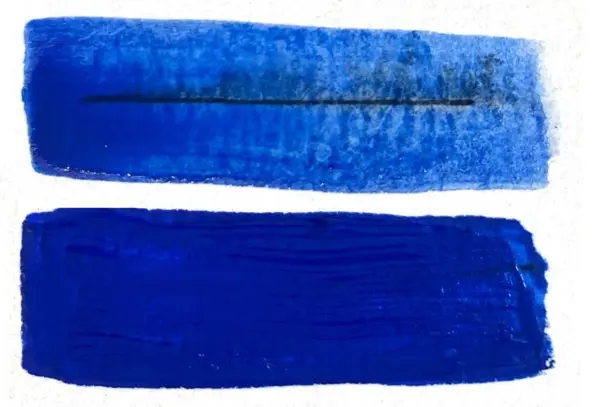
COLOR MIXING
With watercolor, the pigments mix in the water, creating sometimes random and organic transitions. It is necessary to master the proportions to avoid making the colors too diluted or dull. Gouache, thanks to its opacity, offers more direct and homogeneous color mixing, but these can slightly darken as they dry. Both can be mixed on a palette to create custom shades.
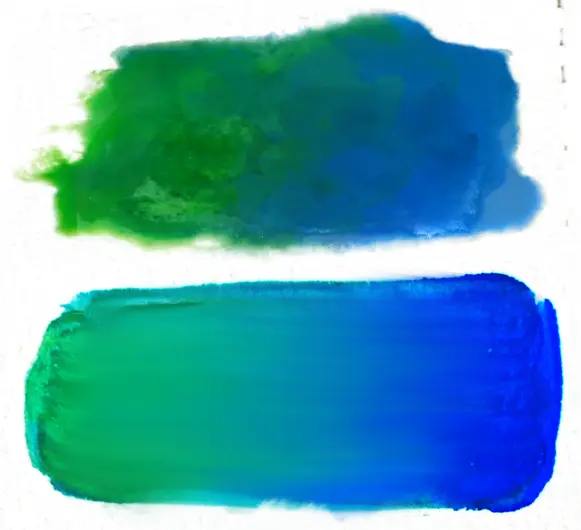
USE AND TECHNIQUE
Watercolor is worked in successive layers that can sometimes take a while to dry, so patience is necessary. It is also important to plan out the different areas to work on in order to prevent the colors from blending unintentionally. Gouache, on the other hand, is applied more in solid blocks and dries much more quickly.
It is more difficult to correct mistakes in watercolor, randomness being a factor to consider. On the other hand, with gouache, you can overlay layers without problem and correct mistakes easily. Both techniques still require learning to master the amount of water used to achieve good results.
OVERALL RENDERING
Generally, watercolor has a light and airy appearance, with playful lights and fluid gradients. Gouache, on the other hand, produces a matte and intense rendering, with more saturated and uniform colors.
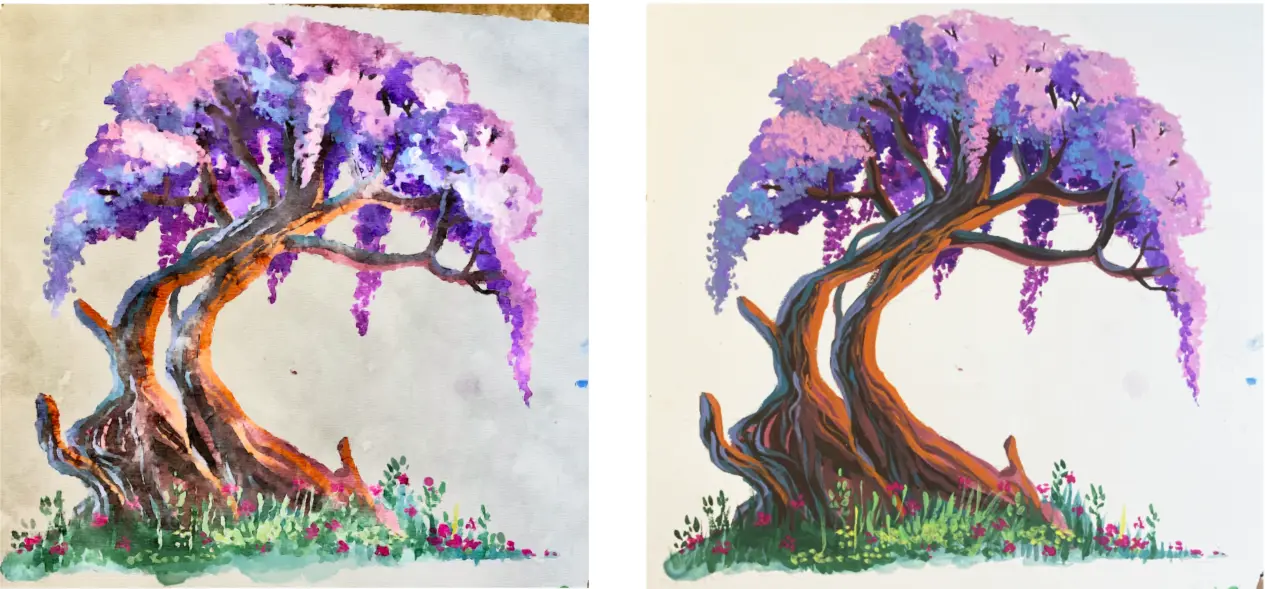
HOW MUCH IS THE EQUIPMENT?
The two techniques are available in various ranges, so you can find each at attractive prices or in the high-end category.
At purchase, if we compare two starter kits of roughly equivalent quality (here, mid to high range), gouache is cheaper (€33 compared to €53). However, and this is very important to take into account, gouache is used up much more quickly than watercolor, and therefore, you will need to reinvest much more regularly in paints or paper. In the medium/long term, both techniques end up costing the same.
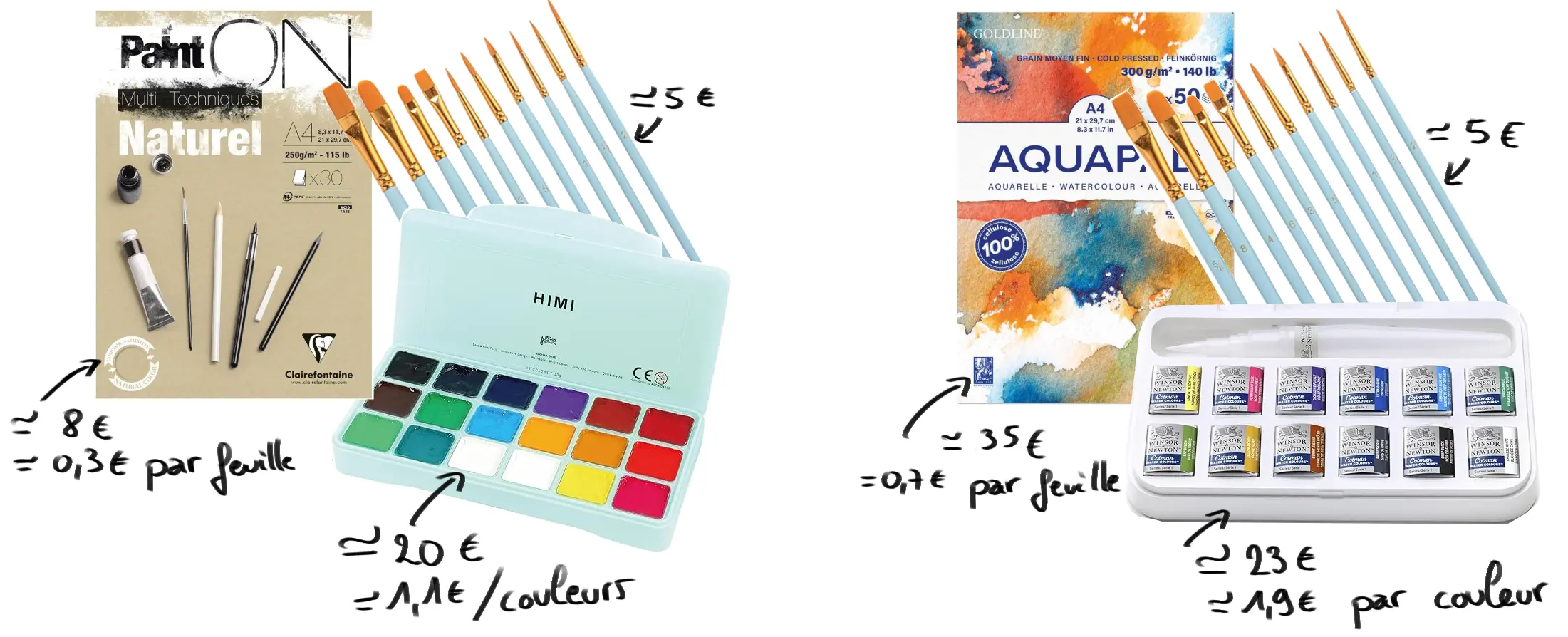
In terms of maintenance, they are about the same as you need to ensure they are stored away from heat and humidity. For both techniques, if you opt for pods, you will need to re-moisten them regularly with a mix of distilled water and isopropyl alcohol to prevent mold growth.
If you wish to make the mix yourself:
- Distilled water: 70%
- Isopropyl Alcohol (70%): 30%
TRANSPORT
In terms of transportation, watercolor offers an undeniable advantage. If we compare the bare minimum of necessary supplies, a multifunction palette and a sketchbook are more than sufficient for watercolor. For gouache, however, considering the paper, tubes/pans, brushes, palette, and water container, it quickly becomes more cumbersome. You may also note that gouache is heavier than watercolor.
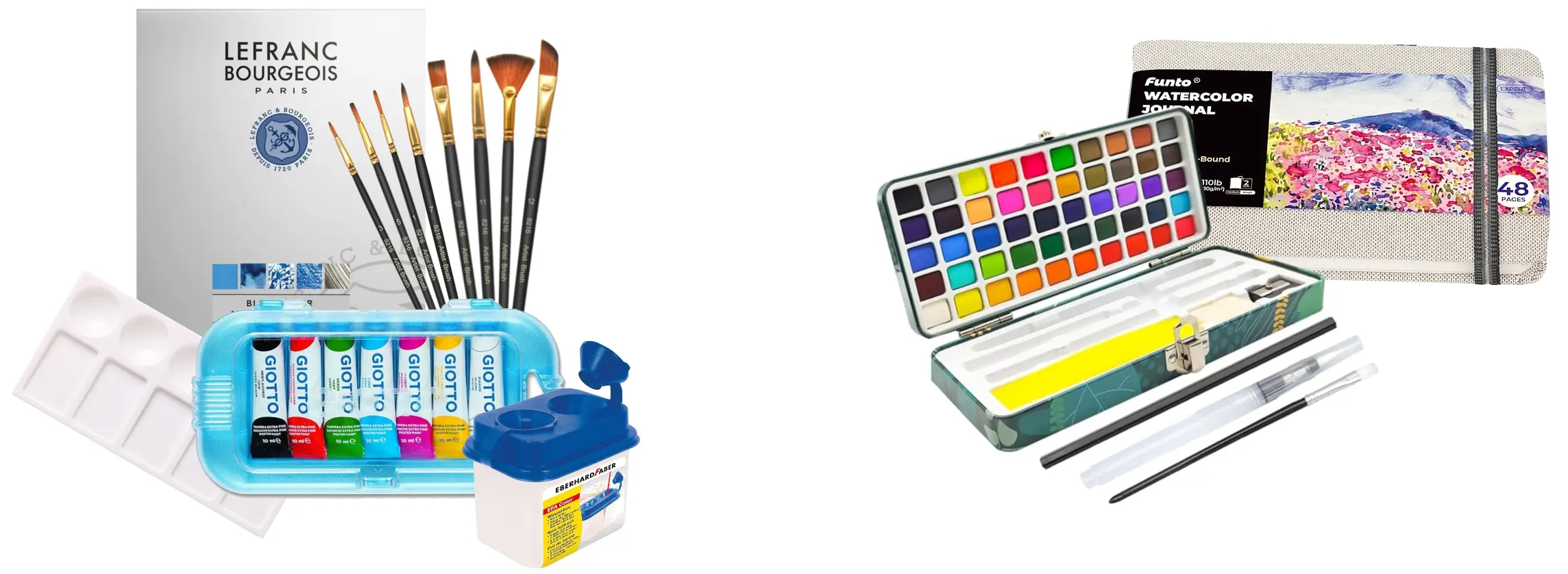
COMPARISON TABLE BETWEEN GOUACHE AND WATERCOLOR
Here is a comparison table that summarizes the different elements we have seen so far.
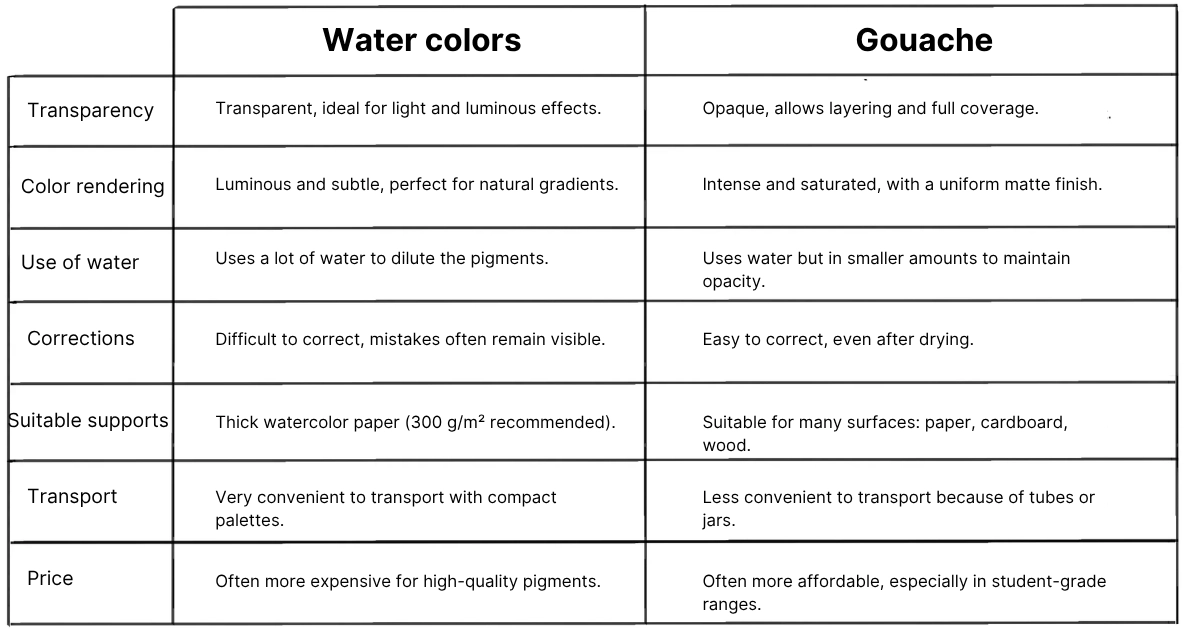
WATERCOLOR OR GOUACHE: FOR WHOM AND WHY?
I recommend watercolor if you want to add touches of color to illustrations and paint lightly. Watercolor is also ideal if you prefer to create travel journal illustrations. If you want to create children's illustrations, it's also very useful because watercolor brings a soft and poetic aspect.
I recommend gouache if you prefer more graphic results with beautiful flat tints or if you like working with a medium that is closer to classic painting. Gouache is also a traditional tool that mimics digital painting very well and will allow you to easily retouch your drawings.
These two techniques offer infinite possibilities: the choice depends on your artistic preferences and the results you want to achieve.

In the end, the choice between watercolor and gouache depends on your artistic goals and personal approach. Watercolor, with its transparency and delicate nuances, is ideal for those looking to explore fluidity and lightness. Gouache, on the other hand, offers more control and correction, which can be an excellent choice for those who prefer more opaque and expressive rendering. Whatever your decision, the important thing is to enjoy experimenting and discovering the technique that inspires you the most.
Writer and Illustrator: Chloé Pouteau

